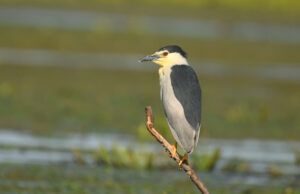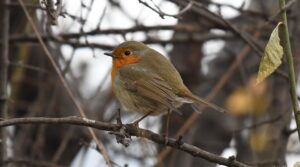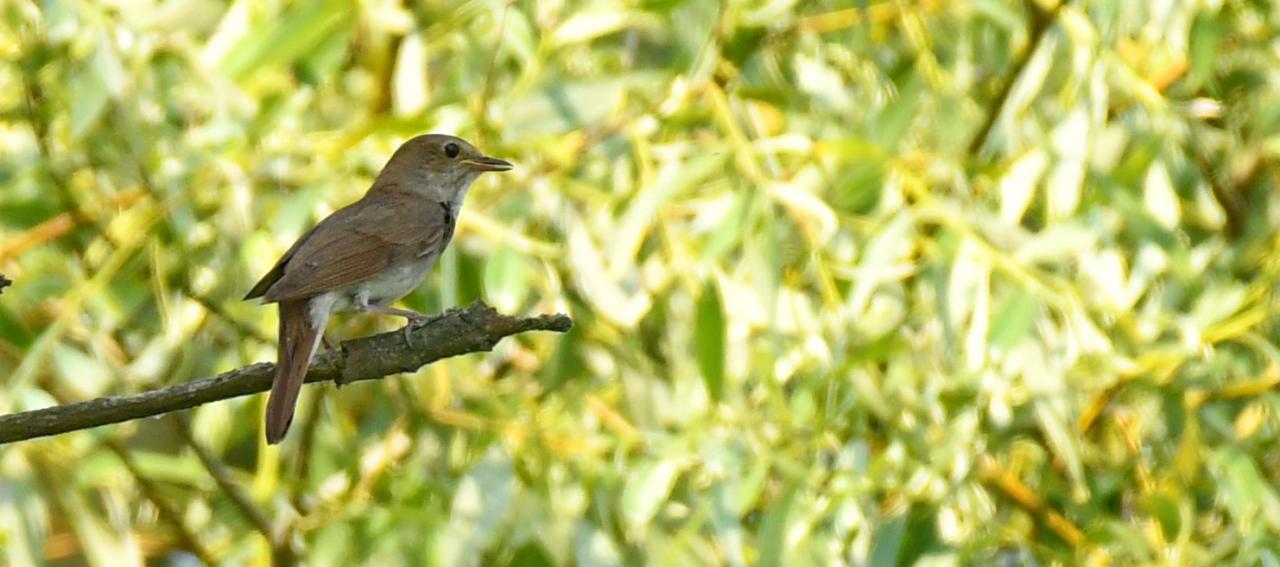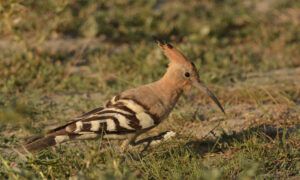The Eurasian Bittern or Great Bittern (Botaurus stellaris) is a wading bird of the heron family Ardeidae. It is one of the species to which the Agreement on the Conservation of African-Eurasian Migratory Waterbirds (AEWA) applies.
This species was first described as Ardea stellaris by Linnaeus in his Systema naturae in 1758. The genus name Botaurus was given by English naturalist James Francis Stephens and is the Latin for bittern, and also bull, because the bittern’s call resembles the bellowing of a bull. The specific epithet, stellata, is the Latin for starry, in reference to its speckled plumage. Its folk names include “barrel-maker”, “bog-bull”, “bog hen”, “bog-trotter” and “mire drum”, mainly with reference to its voice or habitat. The Norfolk name “butterbump” refers to its high fat content when eaten as food.
Bitterns are thickset herons with bright, pale, buffy-brown plumage covered with dark streaks and bars, similar in appearance to the American Bittern, Botaurus lentiginosa. As its alternate name suggests, this species is the largest of the bitterns. The Eurasian or Great Bittern is 69–81 cm (27–32 in) in length, with a 100–130 cm (39–51 in) wingspan and a body mass of 0.87–1.94 kg (1.9–4.3 lb).Distribution and habitat
Distribution in Europe as a whole is estimated at 20-44,000 males.It usually inhabits Phragmites reedbeds. The population is declining in much of its temperate European and Asian range. It is resident in the milder west and south, but migrates south from areas where the water freezes in winter. In the UK, the main areas are Lancashire and East Anglia with an estimated 44 breeding pairs. In Ireland it died out as a breeding species in the mid-19th century, but in 2011 a single bird was spotted in County Wexford and there have been a number of subsequent sightings.
Besides the Eurasian race, Botaurus s. stellaris, another race, Botaurus s. capensis exists in southern Africa, which occurs sparingly in marshes of the east coast, the Okavango Delta and the upland foothills of the Drakensberg. The southern race suffered catastrophic decline during the 20th century due to wetland degradation, and unlike the northern race it is of highest conservation concern.
Usually solitary, the Great Bittern forages in reedbeds, walking stealthily or remaining still above a body of water where prey may occur. If it senses that it has been seen, it points its bill directly upwards and becomes motionless so that its cryptic plumage causes it to blend into the surrounding reeds: an action known as bitterning. It is most active at dawn and dusk.
Males are polygamous with each mating with up to five females. The nest is built in the previous year’s standing reeds and consists of a platform some 30 cm across. Four or five eggs are laid in late March and April and incubated by the female bird. After hatching, the chicks spend about two weeks in the nest and then disperse amongst the reeds
Bitterns feed on fish, eels, amphibians and invertebrates, hunting along the reed margins in shallow water.
The mating call or contact call of the male is a deep fog-horn or bull-like boom, easily audible from a distance of 3 miles on a calm night. This call is mainly given between January and April. Surveys of Eurasian Bitterns are carried out by noting the number of distinct male booms in a given area.
Eurasian Bittern is proposed as a rational explanation behind the mythical creature drekavac in short story Brave Mita and drekavac from the pond by Branko Ćopić.
The eighteenth-century Scottish poet James Thomson refers to the bittern’s ‘boom’ in his poem ‘Spring’ (written 1728), published as part of his ‘Seasons’ (published 1735): “The Bittern knows the time, with bill ingulpht / To shake the sounding marsh…”
The species is mentioned in George Crabbe’s 1810 narrative poem The Borough, to emphasise the ostracised, solitary life of the poem’s villain, Peter Grimes:
“And the loud Bittern from the bull-rush home
Gave from the Salt-ditch side the bellowing boom:”
Thomas MacDonagh, the Irish poet executed for his part in the Easter Rising, translated a famous Gaelic poem of Cathal Buí Mac Giolla Ghunna “The Yellow Bittern” (An Bonnán Buí in the Irish). His friend and fellow poet Francis Ledwidge wrote a celebrated “Lament for Thomas MacDonagh” with the opening line He shall not hear the bittern cry.
In the Sherlock Holmes novel The Hound of the Baskervilles by Sir Arthur Conan Doyle, the villain Stapleton proposes the boom of a Bittern as an explanation for the howl attributed to the mystical hound.
Because of its secretive and skulking nature, it was unclear exactly how the bittern produced its distinctive booming call. One early theory held that the bittern thrust its beak into the boggy ground of the marsh in which it lived, making its vocalization which was amplified and deepened as it reverberated through the water. A reference to this theory appears in Chaucer’s Wife Of Bath’s Tale, lines 972-73: “And, as a bitore bombleth in the myre, She leyde hir mouth un-to the water doun…”
Sir Thomas Browne disputed this claim in his Pseudodoxia Epidemica, Book III, Ch.27: “That a Bittor maketh that mugient noise, or as we term it Bumping, by putting its bill into a reed as most believe, or as Bellonius and Aldrovandus conceive, by putting the same in water or mud, and after a while retaining the air by suddenly excluding it again, is not so easily made out. For my own part, though after diligent enquiry, I could never behold them in this motion…”
Browne is said to have kept a bittern in his study, in an attempt to discover how the ‘boom’ was produced.
photo: Mihai BACIU







